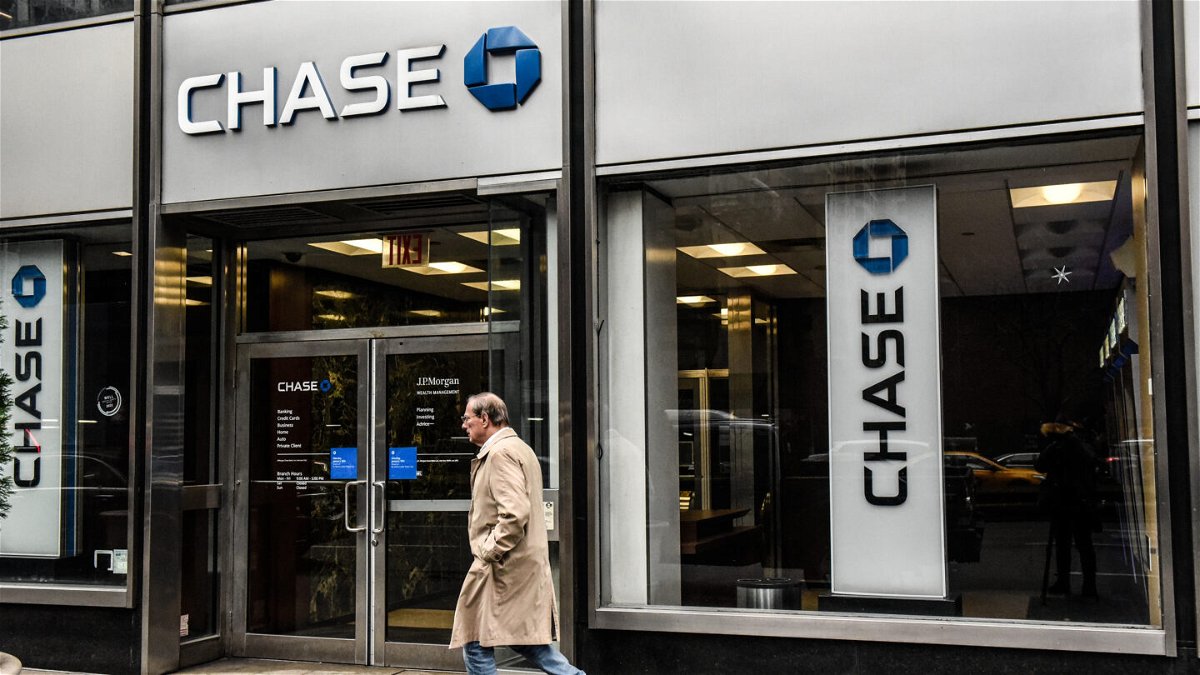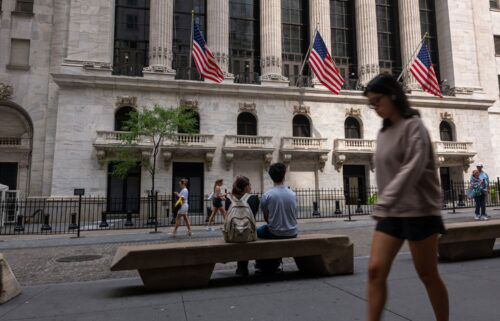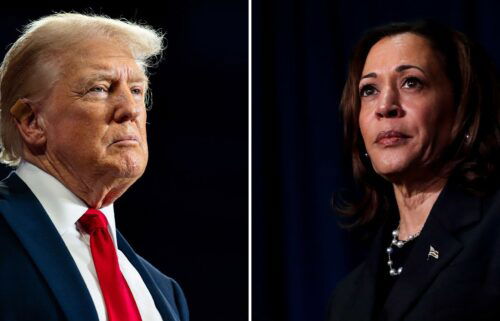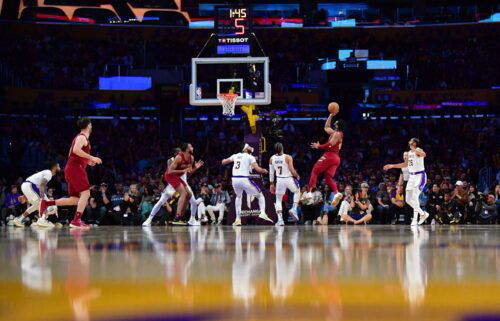JPMorgan could be the banking sector’s biggest hero — or biggest risk

JPMorgan Chase
By Krystal Hur, CNN
JPMorgan Chase, the biggest bank in the United States, is growing bigger. And as the bank swells in size, so does the potential risk it poses to the nation’s financial system.
The Federal Deposit Insurance Corporation said early Monday that JPMorgan Chase bought most assets of First Republic Bank after the regional lender collapsed, spurred by a steep plunge in its stock after a quarterly earnings report revealed $100 billion worth of first-quarter deposit outflows.
Some experts say they’re concerned that JPMorgan’s continued intervention during times of crisis has broader implications for the banking sector, the US financial system and its regulation.
JPMorgan has a staggering $3.67 trillion in assets, not accounting for its latest acquisition. The bank’s tremendous size means it’s often viewed as an economic bellwether and an entity that’s “too big to fail.”
The bank has gained a reputation as the first line of backup during crises for its history of interventions. When Bear Stearns collapsed in 2008, JPMorgan stepped in to purchase it. Six months later, when Washington Mutual collapsed in the largest US bank failure ever, the Jamie Dimon-led lender acquired its banking assets.
Critics question whether the bank plays a quasi-public role that lends itself to a growing number of stakeholders.
“It’s been that way, but now it’s kind of much more visible, that whatever strategic business decisions that JPMorgan takes on its own for its own business, will fundamentally shape the direction of the entire banking sector and financial sector in the United States,” said Saule Omarova, law professor at Cornell University.
And with every failed bank that JPMorgan snaps up, the conundrum becomes clearer: JPMorgan is essentially the biggest risk to the financial system — and every time it expands to uphold the sector’s stability, so does its risk to the financial system.
A ‘gift from God’
While First Republic’s deposits are modest in comparison to JPMorgan’s, its acquisition still has notable benefits for JPMorgan’s already massive balance sheet.
The bank expects to spend $2 billion on restructuring through the end of next year. But it also expects a more than $500 million boost to its net income annually from the acquisition, in addition to a one-time gain of $2.6 billion.
Under the deal, JPMorgan will not assume First Republic’s corporate debt, and will receive $50 billion in financing from the FDIC. The bank will make a $10.6 billion payment for First Republic, return the $25 billion in funds that other big lenders deposited as a lifeline in March and eliminate its own $5 billion deposit.
“This is a gift from God to JPMorgan,” said Dick Bove, chief financial strategist at Odeon Capital Group.
JPMorgan is also poised to convert some First Republic branches around the country into its own wealth centers and inherit the embattled lender’s wealthy clientele, potentially grabbing market share from already struggling small lenders.
And as its share of the market expands, so does its stature as a formidable competitor.
It has “that ability once again, to signal to the world that JPMorgan is a fortress, JPMorgan is the ultimate. This is where the buck stops when you want to solve the problem — it’s JPMorgan or nothing,” said Omarova. “That is worrisome.”
Undermining confidence
While JPMorgan emerges as a savior in the deal, federal regulators appear less impressive. Some experts worry that the bank’s history of coming to the US financial system’s aid is breeding a lack of confidence in regulators.
The FDIC tends to “run to wherever the money is and beg for help,” said Bove. “If you’re on JPMorgan’s side or Bank of America’s side or Morgan Stanley’s side, you can sit there and craft the deal that benefits you the most.”
Still, the alternative to big bank intervention isn’t necessarily better for the financial sector or the economy, said Nicolas Véron, senior fellow at the Peterson Institute for International Economics.
While other options exist, such as the United States taking ownership of a failed lender or liquidizing all of the bank’s assets, those solutions contain political and financial risks that pose dangerous, more immediate threats to the financial system’s stability.
“In practice, it’s very challenging to resolve a large bank without looking for an acquisition of its business by another bank,” Véron said. “Nobody really wants to be the first to try it.”
What’s the solution?
The United States has laws in place to stop these crises before they happen. But recent failures and the missteps that led to them indicate that deep flaws underline the financial system.
“It’s a two-prong problem — the rules could be better. But without better supervision, writing better regulation won’t fix the problem,” said Aaron Klein, senior fellow in economic studies at the Brookings Institution.
After the 2008 financial crisis, the US government enacted the Dodd-Frank Wall Street Reform and Consumer Protection Act in an effort to bolster transparency and accountability in the sector. Global standards were also introduced, with rules targeted at streamlining a process to wind down big banks without destabilizing the financial system or burdening taxpayers.
At the same time, exceptions are made during times of crisis. JPMorgan Chase held over 10% of the nation’s deposits before the First Republic deal, which normally would have prevented it from purchasing another bank. But that rule goes by the wayside when a failed bank is involved.
“The cap, I think, has always been given up in deals like this for the sake of the system,” Dimon said Monday on a call with investors.
In addition, federal oversight has been fraught with mistakes. The Federal Reserve and the FDIC on Friday admitted they fell short in their regulation of Silicon Valley Bank and Signature Bank before their collapses.
Michael Barr, the Fed’s vice chair for supervision, called for stronger regulation and supervision from the central bank in a press release accompanying its autopsy of SVB.
“While higher supervisory and regulatory requirements may not have prevented the firm’s failure, they would likely have bolstered the resilience of Silicon Valley Bank,” Barr said in the report.
Lawmakers have called for tighter rules and oversight after the banking tumult in March, with those calls intensifying after last week. Democratic Sen. Elizabeth Warren, who has been a vocal proponent of tighter banking regulations after recent failures, urged Congress to enact “major reforms to fix a broken banking system.”
“It may look good today while everything’s flying high, but ultimately if one of those giant banks, JPMorgan Chase, starts to stumble, the American taxpayers are the ones who will be on the line,” Warren told CNN on Tuesday.
“Let somebody else buy this bank,” Warren said, pushing for a more diversified banking system since there were multiple smaller bidders for First Republic. “Let somebody else take over those assets.”
The-CNN-Wire
™ & © 2023 Cable News Network, Inc., a Warner Bros. Discovery Company. All rights reserved.



